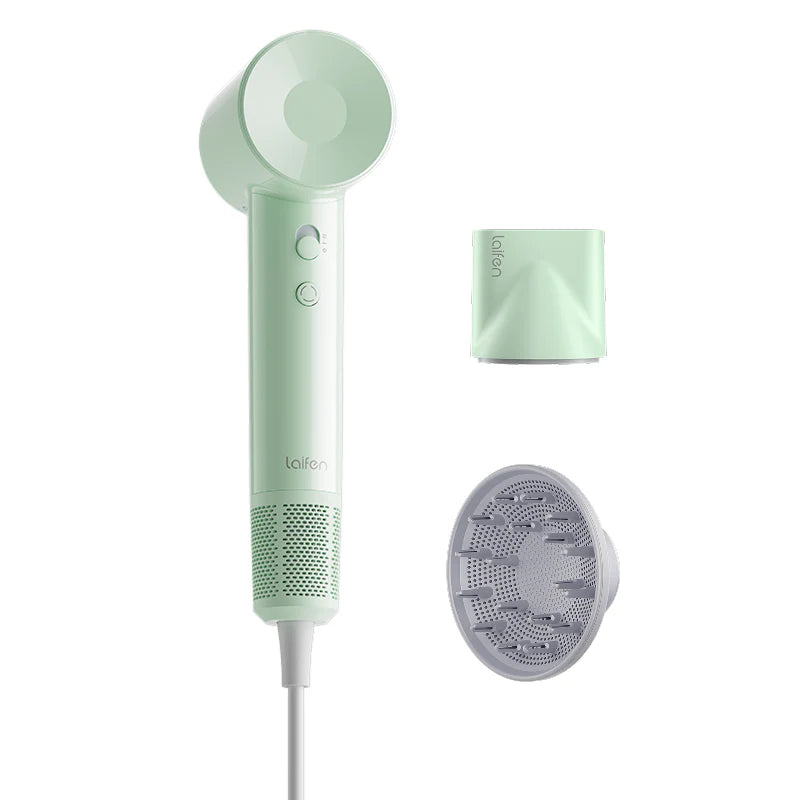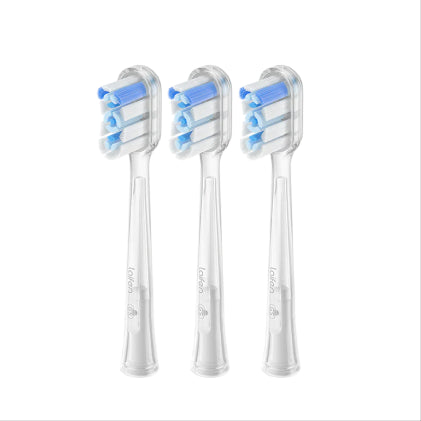
In this article
If you’ve ever looked in the mirror and wondered why your hair seems thinner than before, you’re not alone. Thin hair can feel like a mystery, but once you understand the causes of thin hair, it’s much easier to manage—and even improve. Whether your hair has started thinning over time or it’s always been naturally fine, there are solutions that can help. This guide goes into the reasons behind thinning hair, the difference between thin and fine hair, and ways to thicken thin hair naturally without resorting to harsh treatments.
What Causes Thin Hair?
Hair thinning doesn’t happen out of nowhere, and the reasons can vary widely. Here are some common causes that might be at play:
1. Genetics
Let’s face it, sometimes we can blame our family tree. If thin hair runs in your family, it’s likely hereditary. While you can’t change your genetics, understanding this can help you focus on strengthening and caring for the hair you have.
2. Hormonal Changes
Your hormones can have a big impact on your hair. Pregnancy, menopause, and thyroid issues can all lead to hair thinning. Hormonal imbalances may disrupt your hair’s natural growth cycle, causing more shedding than usual.
3. Stress
Ever feel like your hair’s falling out during a tough time? Stress doesn’t just take a toll on your mind—it affects your hair too. Chronic stress can push more of your hair into the shedding phase, making thinning more noticeable.
4. Nutritional Deficiencies
Your diet plays a huge role in your hair’s health. If you’re not getting enough vitamins and minerals, like biotin, zinc, or iron, your hair might be paying the price. Hair needs nutrients to grow strong and thick, so a balanced diet is key.
5. Overstyling and Heat Damage
We all love a good blowout or sleek look, but excessive heat styling, chemical treatments, and tight hairstyles can weaken hair over time. These habits may lead to breakage and make your hair appear thinner.
Thin Hair vs. Fine Hair: Are They the Same?
It’s easy to mix up thin hair and fine hair, but they’re not exactly the same. Here’s the difference:
- Thin Hair refers to how much hair you have overall. If your scalp is more visible or your hair seems sparse, you’re dealing with thin hair.
- Fine Hair describes the thickness of each individual hair. Fine hair is smaller in diameter, making it soft and light but more prone to breakage.
Knowing which type you’re dealing with is essential because the way you care for thin hair vs. fine hair can vary. For example, thin hair benefits from volumizing products to create fullness, while fine hair often needs lightweight formulas that don’t weigh it down.
How to Improve and Manage Thin Hair
Taking care of thin hair doesn’t have to be complicated. It starts with understanding what your hair needs and making a few simple changes to your routine. A healthy scalp is key, so don’t skip regular massages or using gentle, nourishing products. And if you’re someone who loves their hot tools, it’s time to show your hair some love—cut back on the heat when you can and always, always use a heat protectant before styling.
When it comes to volume, lightweight products like root-lifting sprays, mousses, and texturizing powders can be game-changers. They add fullness without weighing your hair down, which is exactly what you want. Another quick fix? Switch up your part! Flipping your part to the opposite side can give you an instant lift.
Oh, and don’t forget the basics—regular trims to keep split ends at bay and a good diet full of nutrients your hair will thank you for. Avoid super tight hairstyles that pull on your hair and make thinning worse. And if you’re really looking to treat your hair, add in a deep conditioning treatment once a week.
With these little tweaks, you’ll start to see a big difference. Your hair will look and feel healthier, fuller, and much easier to manage. It’s all about finding what works for you and sticking with it.
How to Thicken Thin Hair Naturally
If you’re looking for ways to make your hair look and feel a little fuller, you really don’t need to rely on harsh chemical type treatments. Here are some natural approaches to give a try:
1. Take Care of Your Scalp
Your scalp is important because it is where hair growth begins, so keeping it healthy is key. Massage your scalp a few times a week to help stimulate blood flow and use gentle, sulfate-free shampoos that don’t strip away natural oils. A clean, healthy scalp can encourage better hair growth.
2. Eat for Your Hair
This might sound weird, but it's so important. Your hair is what you eat—literally. Protein-rich foods like eggs, fish, and lean meats help strengthen hair, while omega-3 fatty acids in foods like salmon and walnuts can improve its density. Don’t forget to include plenty of fruits and veggies packed with vitamins. Your hair will thank you!
3. Try Essential Oils
Oils like rosemary, peppermint and pumpkin seed oils have been proven to promote hair growth when used on a consistent basis. Mix a few drops with a carrier oil like jojoba or coconut, and gently massage it into your scalp a few times a week.
4. Hydrate and Deep Condition
Dry hair often looks thinner, so keeping it hydrated is key. Use a weekly deep conditioning treatment to lock in moisture. Ingredients like aloe vera and honey are great natural options to help your hair retain softness and shine.
5. Cut Back on Washing
Washing your hair too often can strip it of natural oils, making it look limp. Stick to two or three washes a week and use a dry shampoo in between to keep your hair fresh.
6. Use the Right Tools
A quality hair dryer can make all the difference for thin hair. The Laifen SE High-Speed Hair Dryer is a fantastic option because it dries hair quickly at lower temperatures, reducing the risk of heat damage. Its lightweight design is perfect for handling thin hair without causing breakage, and it helps you achieve volume and style effortlessly.
Styling Tips for Thin Hair
Styling thin hair doesn’t have to be frustrating. Here are some tricks to make the most of what you’ve got:
- Start with Volumizing Products: Use a lightweight volumizing mousse or spray at the roots before blow-drying. This helps create lift and fullness.
- Change Your Part: Flipping your part to the opposite side can instantly add volume and make your hair look fuller.
- Choose the Right Haircut: Layers can work wonders for thin hair, adding movement and making it appear thicker. Avoid overly long, heavy styles that weigh it down.
- Blow-Dry Upside Down: For extra volume, blow-dry your hair upside down or use a round brush to lift your roots while drying.
Figuring out the Causes of Thin Hair
Try not to worry (remember stress is one of the causes of thinning hair)! Understanding the causes of thin hair is the first step in finding the right solution. Whether it’s genetics, lifestyle factors, or the way you care for your hair, small changes can make a huge impact. Knowing the difference between thin hair vs. fine hair helps you figure out your game plan, while natural remedies like scalp massages, healthy eating, and the right hair tools can help you get thicker, healthier hair. With the right care, your hair can look and feel full of life.



























